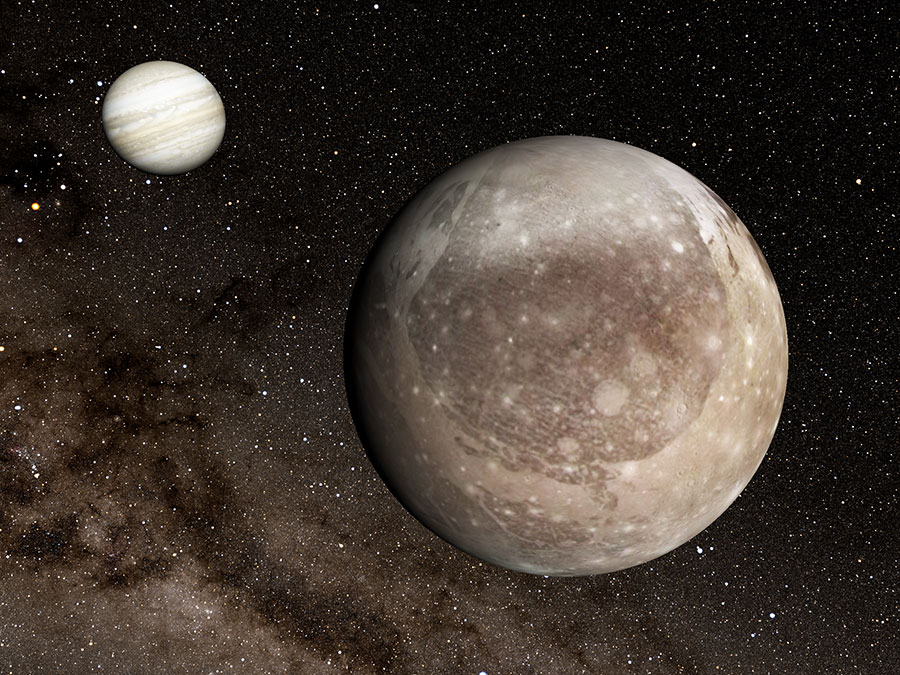That Must’ve Hurt: Ganymede Covered by Giant Crater
| Science

Researchers from Kobe University and the National Institute of Technology, Oshima College have investigated the orientation and distribution of the ancient tectonic troughs on Jupiter’s moon Ganymede through a detailed reanalysis of image data from probe missions. They discovered that these troughs are distributed concentrically across almost the entire surface of Ganymede, indicating that these troughs may be part of one giant crater covering Ganymede. If so, this is the largest impact structure identified in the Solar System so far.
Many furrows, or trough formations, have been observed on the surface of Ganymede, one of the Jovian moons. This research group comprehensively reanalyzed image data of Ganymede obtained by NASA’s Voyager 1, Voyager 2, and Galileo spacecrafts. The results revealed that almost all of these furrows appear to be arranged in concentric rings centered around a single point, indicating that this global multiring structure may be the remains of a giant crater. The radial extent of the multiring structures measured along Ganymede’s surface is 7800 km. For comparison, the mean circumference of Ganymede is only 16,530 km. If correct, this is the largest crater yet identified in the Solar System. The previous record holder with a 1900 km radius is on Calisto, another Jovian moon.
Based on a computer simulation conducted using “PC Cluster” at the National Astronomical Observatory of Japan (NAOJ), the team speculates that Ganymede’s giant crater could have resulted from the impact of an asteroid with a radius of 150 km traveling 20 km/s.
Lead researcher Naoyuki Hirata comments, “The European Space Agency’s JUICE (Jupiter Icy Moon Explorer) mission, scheduled to launch in 2022 and arrive in 2029, will examine Jupiter and its moons, including Ganymede, with instruments such as the GAnymede Laser Altimeter (GALA) which NAOJ is helping to develop and imaging spectrographs. GALA is being developed mainly by the German Aerospace Center in collaboration with institutes in Switzerland, Spain, and Japan, including JAXA, Chiba Institute of Technology, Osaka University, and NAOJ. We hope that JUICE will confirm the results of this study and further advance our understanding of the formation and evolution of Jupiter’s moons.”
These research results were published online as Hirata, N., Suetsugu, R., Ohtsuki, K.,“A global system of furrows on Ganymede indicative of their creation in a single impact event” by Icarus on July 15, 2020.